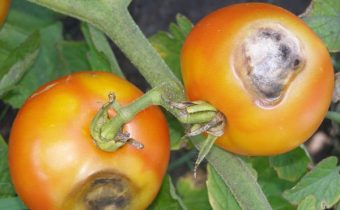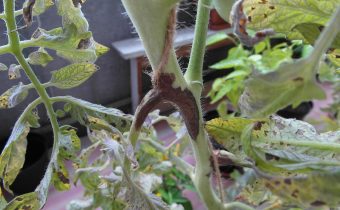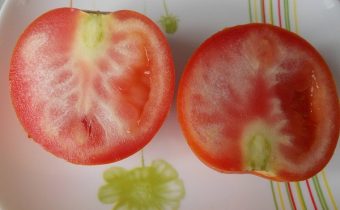Aspermia or bushiness of the top of the tomato, how to fight
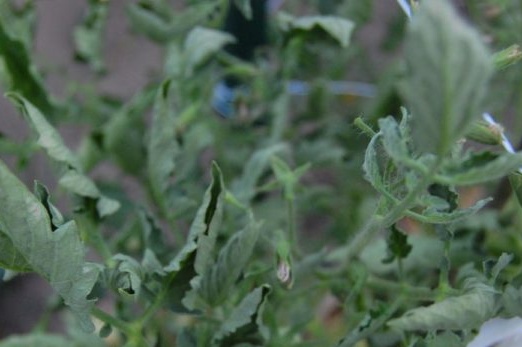
The causative agent of the disease, which occurs only indoors, is a tomato aspermia virus. The period of its activity is from January to February, when the initial symptoms are recorded by the gardener. The first mention of the disease is dated to the middle of the 20th century in a small town in England, after which viral pathology spread everywhere.
The distribution area of the viral pathogen is regions with a stable warm climate and moderate humidity.
Pathogens and carriers of the disease
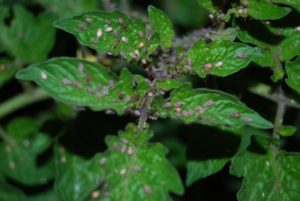
The main carrier of the virus is aphid. Less commonly, the pathogen is transmitted mechanically, for example, when the gardener uses infected seeds or too much accuracy on the bed. The catalyst for the development of the pathogen will be an increased level of moisture in the greenhouse. The second negative factor is the mistakes of the grower, associated with the wrong choice of means of feeding and watering.
Symptoms of the disease
Within a few days after the virus enters the active form, multiple white dots form on the surface of the lateral veins. As correctly, they are localized on the lower leaves. It takes another 4-5 days and most of the surface of the sheet changes color to dark brown. If the gardener leaves the situation unattended, then after 2-3 weeks the leaves wither.
The acute form of pathology is the coarsening of the central vein on the surface of the sheet. The next stage is their deformation and twisting down. Visually, it seems that the sheet stretched out. Practically always the bushiness of the top of a tomato spreads strictly vertically.
A further mechanism for the development of the disease is as follows:
- gradual twisting of the leaves around its axis;
- By the second decade of February, the lower part of the tomato bush becomes highly deformed;
- lower leaves acquire an elongated shape with respect to the stem;
- the plant itself acquires a slightly fusiform shape;
- a bush afflicted with a pathogen significantly lags behind its healthy counterparts in growth rate;
- the veins of the leaf plate acquire a pronounced blue tint;
- areas of the stem and leaves, where cell death is recorded, become constricted;
- the color of the petals changes - it becomes pale yellow;
- The number of stamens increases many times.
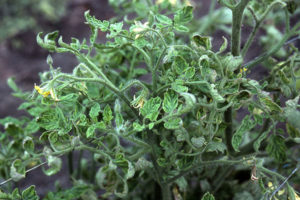
The above symptoms of the disease develop within a certain time period, so the gardener has enough opportunities to pay attention to the problem in a timely manner.
Therapeutic methods
As soon as the gardener noticed the signs of the disease in one of the plants, he immediately rejects it. Efficiency of the measures taken reduces the likelihood of further infection. The second necessary action is the obligatory treatment of the soil near the affected bushes using a fungicide of synthetic nature.
Such substances are used to a limited extent. Otherwise, toxic substances accumulate in the fruits of tomatoes.
The list of recommended drugs is as follows:
- "Ridomil" - a broad-spectrum drug. 2.5 mg of the substance is added to 10 liters of water. Spend 2 treatments per season.
- "Agate" is a biological substance produced in liquid form. 3 ml is enough for 40 liters of water.
- "Acrobat" - for every 10 liters of water use 5 mg of the substance. Enough 1 treatment per season.
Preventive recommendations
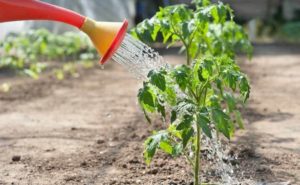
As soon as at least 1 diseased plant appeared on the site, it is immediately disposed of by burning. Other methods will not lead to the destruction of the pathogen. The second preventive advice is the use of insecticides to remove adult aphids and larvae:
- "Aktara" - within 30 minutes after application, the pest loses its gastronomic interest in the treated crops. Death of aphids occurs within 24 hours. Treatment of the site is carried out 1 time every 6 weeks only in chemical protection. The recommended dosage is 4 g for every 10 liters of water.
- "Commander" - a concentrate that must be diluted in water, has a wide spectrum of action. One package is enough to process 10 acres. The contents of the package are dissolved in 20 liters of water.
- "Corado" - characterized by an increased duration. For every 10 liters of water take 1 ml of the substance. Processing is carried out only in dry weather.
After completion of the harvest, the gardener is obliged to weed the beds and digging. All plant residues must be removed. It is desirable to repeat the procedure in spring and autumn. Completing the list of practical recommendations reminder about the observance of crop rotation. It is forbidden to grow asters, chrysanthemums and tomatoes at 1 site.
Experienced growers recommend choosing varieties of tomatoes that are resistant to viral pathogens. The list of those is as follows:
- "Blitz";
- "Opera";
- "Spartacus";
- "Virtuoso";
- "Bohemia".
Bushiness of the top of a tomato bush is a disease that occurs only in protected ground conditions. Increased humidity and stable warm weather are the best conditions for accelerated virus development. In the role of carrier of the virus aphid, therefore, with it and its larvae must constantly fight. The peak activity of the pathogen - January and February. At the specified time interval, a regular inspection of landings should be carried out.


